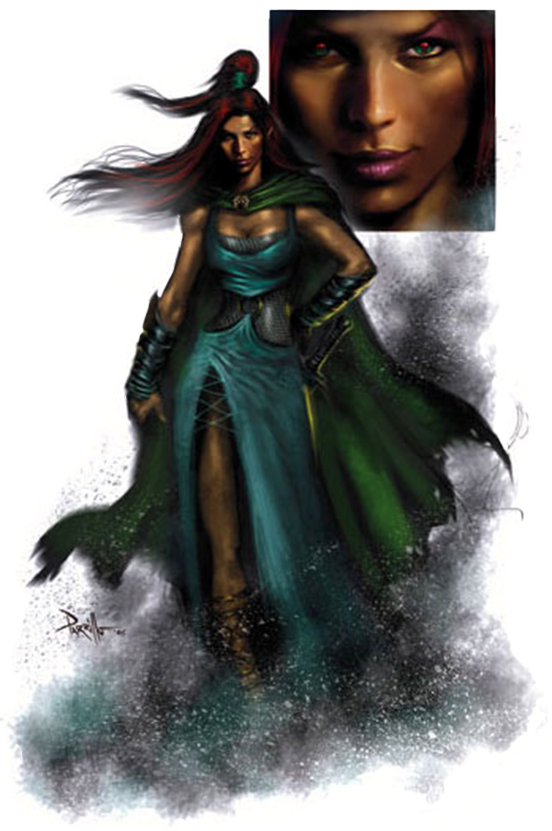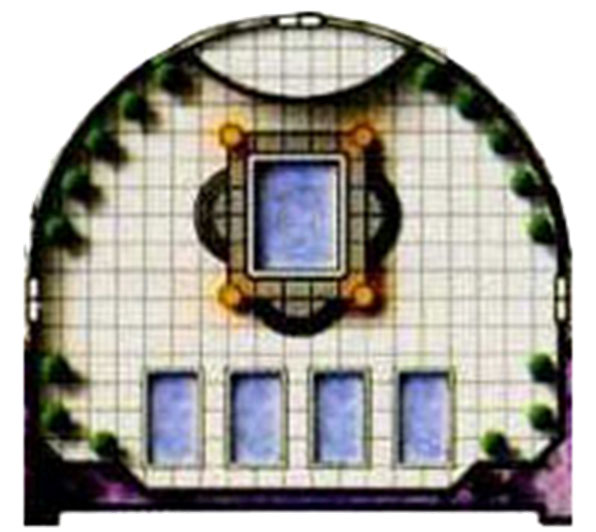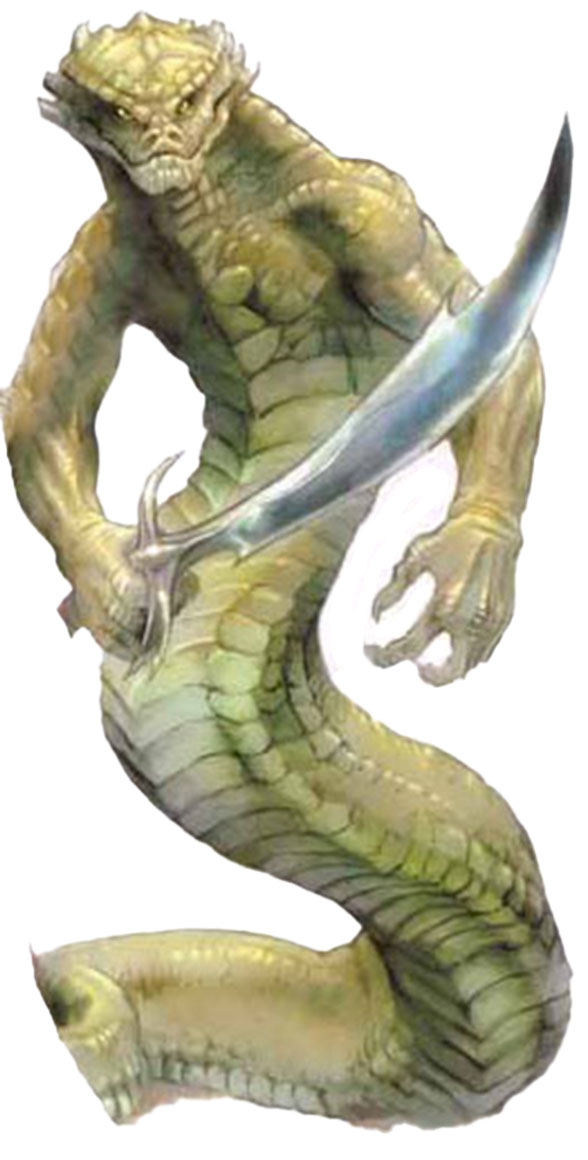
SESSION 44A: WHOREHOUSE OF TERROR
October 28th, 2009
The 24th Day of Kadal in the 790th Year of the Seyrunian Dynasty
If the slaves awoke and their master saw card-playing corpses it wouldn’t be much better than if they were seen themselves. So they pulled the dead serpent-men out of the kitchen and spent a couple of minutes cleaning up the area around the card table. The serpent-men might be missed, but at least the slaves wouldn’t immediately suspect that anything was seriously wrong.
Back in the lounge they carefully arranged the corpses – along with that of the hookah smoker – to look as if they were merely passed out in drugged stupors.
“Isn’t his head missing?”
“We’ll just wrap a blanket around his neck. It’ll be fine.”
That done they headed through the far door into a narrow service hallway which clearly lacked the opulence of the public chambers. They took the first door on the right, finding themselves in a room of even plainer construction containing a simple stone well. In one corner of the room, however, there was a strange contraption of glass tubes and contorted metal.
The group had some grave doubts about what the purpose of this room could be. Words like “enema” were thrown about. Ranthir was initially going to take a closer look at the equipment, but after hearing that decided against it.
Tee, on the other hand, did head into the room and quickly inspected the well (finding nothing unusual about it – it was a perfectly ordinary well). She was about to move on to the equipment in the corner—
When a patrol of two fully-armored serpent-men came around the corner in the hall.
THE MELEE OF THEIR DOOM
One of them immediately turned and ran back around the corner. Tor, Agnarr, and Elestra quickly converged on the remaining serpent and hacked it to pieces. But by the time they were finished with it, two more had appeared at the end of the next hall in a four-way intersection between several doors.
Tor and Agnarr sprang down the hall towards them, but one of the serpent-men lowered their hands and unleashed some sort of magical effect that caused the walls and floors and even the ceiling of the hall to sprout thick, tendrilous growths that grasped and clawed at all of them – imprisoning some, but slowing them all.
The other serpent-man followed suit, dropping a magical, murky cloud of shadow down the length of the hall. Only then did they moved to engage the broken ranks of the party. Tor managed to land some solid blows as the serpent-men closed, but Agnarr was struggling with the shifting, shadowy, magical murk.
Meanwhile, beyond the entangling length of their own hall, they could see more reinforcements coming down the far hall. Ranthir responded by dropping a web over the intersection and catching them there… but through its thick strands they could see six more of the serpents running into the far hall.
The slippery serpents nearest them, meanwhile, slithered between Tor and Agnarr – evading their blows and heading straight for Nasira, whom they had identified as the healer. She was dealt several grievous blows while struggling to backpedal through the thick, twisting growths – which eventually caught at her and pinned her helplessly before the serpent’s attacks.
Agnarr flew into a rage. “Stay away from her!”
The serpent-men in the far hall had now thrown open one of the doors there. “Erepodi!” they shouted through it. “We’re under attack!”
Erepodi… The name was familiar to Tee. It took her a moment to wrack her memory, but eventually she alighted upon its source: The small picture locket they had found in Pythoness House.
And indeed, in the very moment that Tee remembered the locket, Erepodi herself strode into view through the door, scarcely changed from her picture.
 “I know not who you are! Or why you have come! But none shall disturb my house!”
“I know not who you are! Or why you have come! But none shall disturb my house!”
With a sweep of her hand she dispelled Ranthir’s web, sweeping it away like so many cobwebs.
They needed to get mobile. Fast. Tee used the bag of elemental flames they had taken from the Temple of the Ebon Hand to free Nasira from the tangling vines, even though it meant dealing her several grievous burns in the process. Agnarr, meanwhile, managed to hack huge gashes into the back of the serpent warrior that had been attacking Nasira, so that it now turned back and renewed its assault on him.
But it was all taking too long. Reinforcements were pouring down the hall and Tor found himself surrounded by a thicket of porcelain, silvered halberds. Tor lowered himself into a defensive stance—
And then a black tendril of twisted energy lanced out from Erepodi’s finger and struck Tor in the heart. As the coruscating beam stretched between them, Erepodi placed her finger over her own heart, necromantically linking them both.
Tor, feeling the very strength of life and soul sucked out of him, stumbled. The injured serpent warrior he had been fighting managed to slip back through the ranks of its fellows. It came up next to Erepodi, who raised an arm to reveal an elaborate tattoo… which the serpent warrior tore away from her skin and laid upon his own, healing his wounds.
“Dammit!” Tee cried.
Although badly injured, Tor and Agnarr had managed to cover the retreat of Nasira and Elestra back beyond the limit of the supernatural darkness. Tor and Agnarr were now hacking their way back as well, but the serpents responded by simply dropping another darkness. Ranthir attempted to dispel the magical vines, but the serpents just dropped another. And another. The vines and overgrowth grew thicker and more seemingly impassable.
Erepodi cried out. “The stones of Porphyry House itself shall rise against you! Come forth my statues! Defend these walls!”
THOOM. THOOM. THOOM.
“Oh shit…” Elestra whispered.
Running the Campaign: Recalling the Lore – Campaign Journal: Session 44B
In the Shadow of the Spire: Index


















